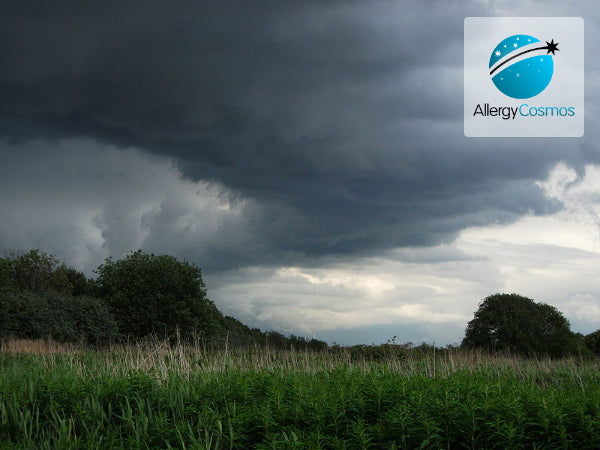Thunderstorm asthma is an increase in cases of asthma attacks whenever there is a thunderstorm in the area. Although thunderstorms are not a very common asthma cause in the UK, it is important for people with asthma to understand thunderstorm asthma and know what to do to prevent or manage these episodes.
Thunderstorms affect mainly the South East and the East Midlands for around 20 days during the summer months. In Scotland and on the West Coast, thunderstorms also occur, but less often and without a clear seasonal pattern. Various reports have noticed an increase in asthma symptoms and patients visiting the emergency services following a thunderstorm. An interesting study from Canada noted that acute asthma accounts for between 5 and 17 per cent of emergency room visits on thunderstorm days, compared with just 2 per cent on a day when there is no storm. Another study of calls to the GP (in England) showed significantly more calls about asthma on a thunderstorm day than on a non-thunderstorm day.
Analysis of the factors associated with a thunderstorm that might lead to an asthma attack found that it was when a storm was accompanied by rainfall and moderate (9.5–14.3 metres per second) wind speed, that problems occurred. Naturally, there has been keen interest in whether these asthma attacks occur because a thunderstorm (with rain and wind) 'stirs up' airborne allergens and thereby increases exposures among those susceptible. Research from Australia shows that there was a 4-fold increase in closed pollen grains and a 7-fold increase in ruptured pollen grains during a thunderstorm. These findings support the theory that grass pollen grains or tiny particles of starch from ruptured pollen grains may play a role in thunderstorm asthma. The latter is small enough to be inhaled right into the lungs, so are perhaps the main risk factor.
Other research has detected elevated levels of several species of fungal spores during a thunderstorm. A UK study found an increased risk of asthma admissions with elevated levels of certain airborne fungi.
There has also been research on thunderstorm asthma patients. In a group of 16 patients undergoing allergy testing, 12 were found to have high antibody levels to grass pollen. In another study, involving seven patients, all were sensitive to pollen from Parietaria species (a flowering plant of the nettle family). A study on English patients with thunderstorm asthma showed they were more likely to be sensitive to Cladosporium or Alternaria species (both are common fungi) than were seasonal asthma controls. Meanwhile, another case-control study, from Australia, showed increased sensitivity to ryegrass and Cladosporium among thunderstorm asthma patients. These findings are of interest because it is known that sensitivity to Cladosporium and Alternaria increase the risk of suffering severe asthma outside of thunderstorms.
From this evidence, various theories have been developed on thunderstorm asthma:
- Updrafts of air which drag air into thunderstorm clouds collect up pollen grains, which rupture to release allergenic starch grains. These are then distributed outwards by downdrafts.
- Pollen may be spread when pollen enters rain droplets. Pollen grains are then released when the rain droplets evaporate.
- Changes in the electrical charge on airborne allergen particles may occur during a thunderstorm and this promotes deposition of particles in the alveoli (air sacs) of the lungs.
It is hard to be specific as to which thunderstorms are going to cause asthma attacks because not enough is understood about what exactly it is about the weather conditions that trigger the symptoms. It has been suggested that an 'early warning' system, based on weather data and the behaviour of airborne allergens should be developed. In the meantime, people with asthma should follow these guidelines:
- If you are sensitive to known thunderstorm-related allergens, stay indoors and close windows when a storm is brewing.
- Make sure you have easy access to prescribed asthma medication before and during a thunderstorm.
- If you suffer with asthma, don't assume you won't get thunderstorm asthma because you haven't had it in previous storms. There is always a first time, so be prepared!
Source
Dabrera G et al (2013). Thunderstorm asthma: an overview of the evidence base and implications for public health advice. http://qjmed.oxfordjournals.org/content/106/3/207.long




